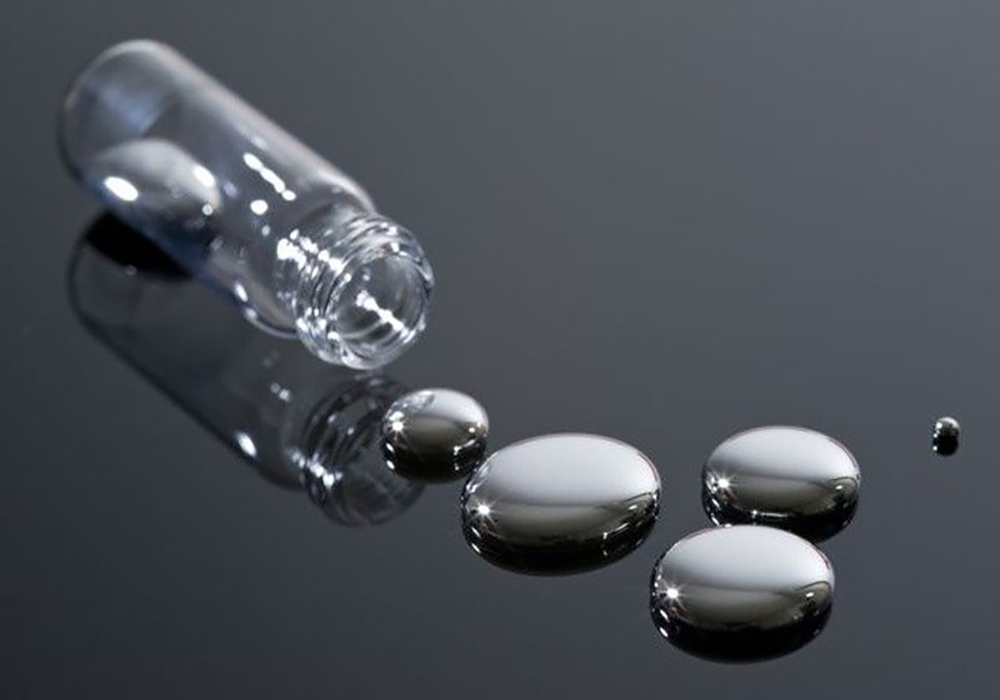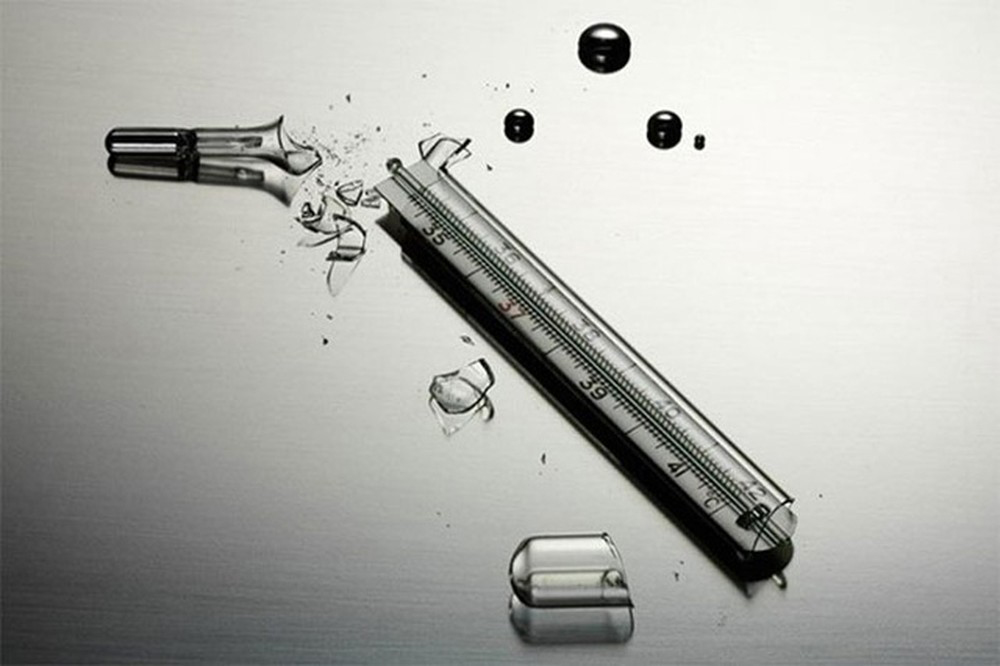Mercury is one of the most toxic metals on earth. It is the only metal that is liquid at room temperature and is extremely slippery to the touch. It is also heavy, with a tablespoon of the element weighing about 700g. However, mercury’s unique properties also make it dangerous to humans.

Liquid mercury produces vapors that can be easily inhaled and cause serious health problems. It can also get into water supplies and cause problems with long-term exposure. However, some water filters can remove the risk of mercury poisoning from water. Below, you can find information about what mercury is, the symptoms of mercury poisoning, and how to remove it from water.
What Is Mercury?
Mercury (symbol Hg) is the only metal that remains liquid at room temperature. It is a neurotoxin, which means that exposure to mercury can affect the way the brain functions.

When an object containing mercury breaks, the elemental mercury breaks into tiny droplets and vaporizes into an odorless, toxic substance. Over the past few decades, the dangers of mercury have become more widely known, and some products are no longer allowed to contain the metal.
The most common mercury ban involves fever thermometers. Since 2001, many state and city governments have passed restrictions on the manufacture of thermometers containing mercury because of the danger they pose if broken.
How does mercury exist in water?
Most mercury in water sources is the result of atmospheric deposition, gases that fall from the atmosphere as rain, snow, or dry particles to the ground. Other sources include industrial waste, mining waste, volcanic activity, and natural deposits. Mercury can be found in electrical and electronic applications such as fluorescent lights, thermostats, automotive parts, some batteries, and LCD screens. Some manufactured products such as thermometers in many states no longer contain mercury due to the health risks it poses. However, the electrical and electronics industries, along with coal-fired power plants, are still responsible for the majority of mercury found in industrial waste.
Is mercury in water dangerous?
Mercury is toxic to the body, causing unpleasant side effects. Low levels of mercury in the blood can be fatal at high levels. Mercury is especially dangerous because it does not need to be ingested directly to cause poisoning. Rather, mercury poisoning most commonly occurs from inhaling mercury vapor, but it can also be absorbed through the skin. Mercury is absorbed into the skin very slowly, so mercury vapor is much more dangerous than elemental mercury on bare skin.

Mercury poisoning
Mercury poisoning occurs from long-term exposure or rapid high-level exposure. Symptoms of mercury poisoning vary depending on the age of the exposed person, the length of exposure, the exposed person’s pre-existing medical problems, the amount of mercury in the exposure, and the form of mercury involved.
Symptoms of mercury poisoning
Methylmercury is a form of mercury found in high concentrations in fish and shellfish. It is especially dangerous for infants and children because it affects the nervous system. Pregnant mothers are exposed to high levels of methylmercury when consuming certain types of seafood, which can affect the development of their babies’ brains and nervous systems. Municipal treated water is tested for mercury, but well water can contain dangerous levels of the metal. People with blood mercury levels above 100 parts per billion are most likely to experience symptoms of mercury poisoning.
While methylmercury is most harmful to infants and children, adults can still experience side effects from too much exposure. Common side effects of methylmercury poisoning include: loss of vision, lack of concentration, muscle weakness, lung failure, hearing loss, and cerebral palsy in infants.
Symptoms of elemental mercury poisoning
Elemental mercury poisoning is caused by exposure to spilled metallic mercury. Many household items contain metallic mercury, including old thermometers, thermostats, fluorescent light bulbs, barometers, and blood pressure monitors. Excessive exposure to elemental mercury can result in the following side effects: Mood swings, insomnia, headaches, decreased mental awareness, and decreased nerve response.
Does tap water contain mercury?
To meet EPA standards for mercury in drinking water, tap water must contain less than 0.002 parts per million (ppm) or 2 parts per billion (ppb) of mercury. At these levels, mercury does not pose any health threat, even with long-term consumption. The people most likely to be exposed to mercury in their water are those who use water from wells.
Does well water contain mercury??
Most well water contains some mercury, but often the mercury levels are below dangerous levels. Factors that affect mercury levels in water include natural sediments, mining waste, air pollution, industrial waste, and volcanic activity. According to the EPA, Texas, Ohio, and Pennsylvania contribute more mercury pollution than any other state due to coal-fired power plants. Mercury contamination in the air settles to the ground in a process called atmospheric deposition. This allows mercury to enter surface water sources, soil, and eventually groundwater. To find out if your well water contains safe levels of mercury, you need to use a test kit. Mercury test kits are easy to use and provide results in just a few minutes. If the test determines that your water has excessively high levels of mercury, you will need to incorporate one of the filters listed below into your water system.
Best Water Filters to Remove Mercury
Some of the best water filters for removing mercury include reverse osmosis systems, activated carbon filters, and water distillers.
Reverse osmosis system
Reverse osmosis (RO) systems use at least three stages to filter contaminants from water. These stages include a sediment filter, a carbon filter, and a reverse osmosis membrane. The activated carbon stage in an RO system removes a high percentage of the mercury from the water, and the remainder is handled by the tiny pores in the RO membrane. RO filtration removes about 95% to 97% of the mercury from water, virtually eliminating the risk of mercury poisoning from consumption or absorption.
Advantages of reverse osmosis for mercury removal
- Removes most other contaminants along with mercury
- Ideal for well water, the water source with the most mercury
Disadvantages of reverse osmosis for mercury removal
- More complex to use than carbon filters and water distillers
- Usually more expensive than carbon filters
- Generates wastewater during filtration
- Require a properly sized tank to ensure it can produce and collect enough water for your household’s needs
Carbon filter
Both activated carbon filters and carbon filters are capable of reducing mercury levels in water. Both types of filters work in essentially the same way. Activated carbon filters and carbon filters use finely ground activated carbon particles to attract contaminants such as mercury, chlorine, and lead as water passes through the filter. The carbon in a carbon filter is further ground into a fine powder and mixed with a binder to create a solid mass. Because of the composition of the carbon filter, water takes longer to pass through it than it does with an activated carbon filter. This allows more contaminants to be removed, but it also reduces the flow rate of the filter. Some activated carbon filters require more contact time with water, making them more effective but slower. Activated carbon filters are often used in conjunction with other filtration systems, but they are also used in standalone systems such as refrigerators and water dispensers.
There are also many under-sink systems that combine carbon with other filtration technologies to remove mercury, as well as other common contaminants like lead, VOCs, and chlorine. Some of these use ultrafiltration membranes to further reduce contaminants. While these won’t solve your household’s problem if you’re drawing water from a mercury-laden well, they can provide safe, highly purified water from the individual faucets they install below.
It is important that you locate a carbon filter that has been tested and certified to remove mercury.
Advantages of carbon filters for mercury removal
- Simple to install and maintain
- Higher flow rate than RO or water distillation
Disadvantages of carbon filters for mercury removal
- Does not remove as many contaminants as reverse osmosis or water distillation
- Does not make water microbiologically safe
- Removes significantly less arsenic than RO or distilling water from well water, the water source most likely to contain mercury
Water distiller
Water distillers produce extremely pure water. In fact, so much of the impurities are removed during the distillation process that the resulting product has an unpleasant taste. Water distillers are used in applications such as hospitals and laboratories where water must be as free of impurities as possible. The water in the distiller is placed in a boiling chamber where it is heated until it turns into steam. As the water evaporates, virtually all of the contaminants, including mercury, are left behind in the boiling chamber. As the vapor reaches the ceiling of the distillation apparatus, it condenses back into liquid form and falls into a collection tank. Because water takes so long to boil, evaporate, and finally condense back into liquid form, water distillation is not capable of purifying enough water for uses other than drinking at home.
Advantages of water distillation for mercury removal
- Production of high purity water
- Produces microbiologically safe water
- Easy to install and maintain
Disadvantages of water distillers for mercury removal
- Water purification is very slow
- The finished product has a flat taste
Can boiling water remove mercury?
Boiling water does not remove mercury. It will only increase the levels of mercury and other contaminants as the water is lost as steam. Boiling water also increases the risk of releasing some forms of mercury into the air.
Can mercury contaminated water be used for bathing?
Mercury is absorbed through the skin very slowly. However, if your water contains high enough levels of mercury, long-term exposure can cause poisoning. You can bathe in water with more than 2 ppb of mercury, but you don’t want to expose yourself to high levels for long periods of time.
See more: How Often Should You Change Your Pool Filter?
Xem thêm các sản phẩm tại: https://thietbinganhnuoc.com/san-pham
Follow Fanpage: https://www.facebook.com/SongPhungthietbinganhnuoc/ to be updated with new products.
Translator: Duong Nguyen Hoang Khang


